Product
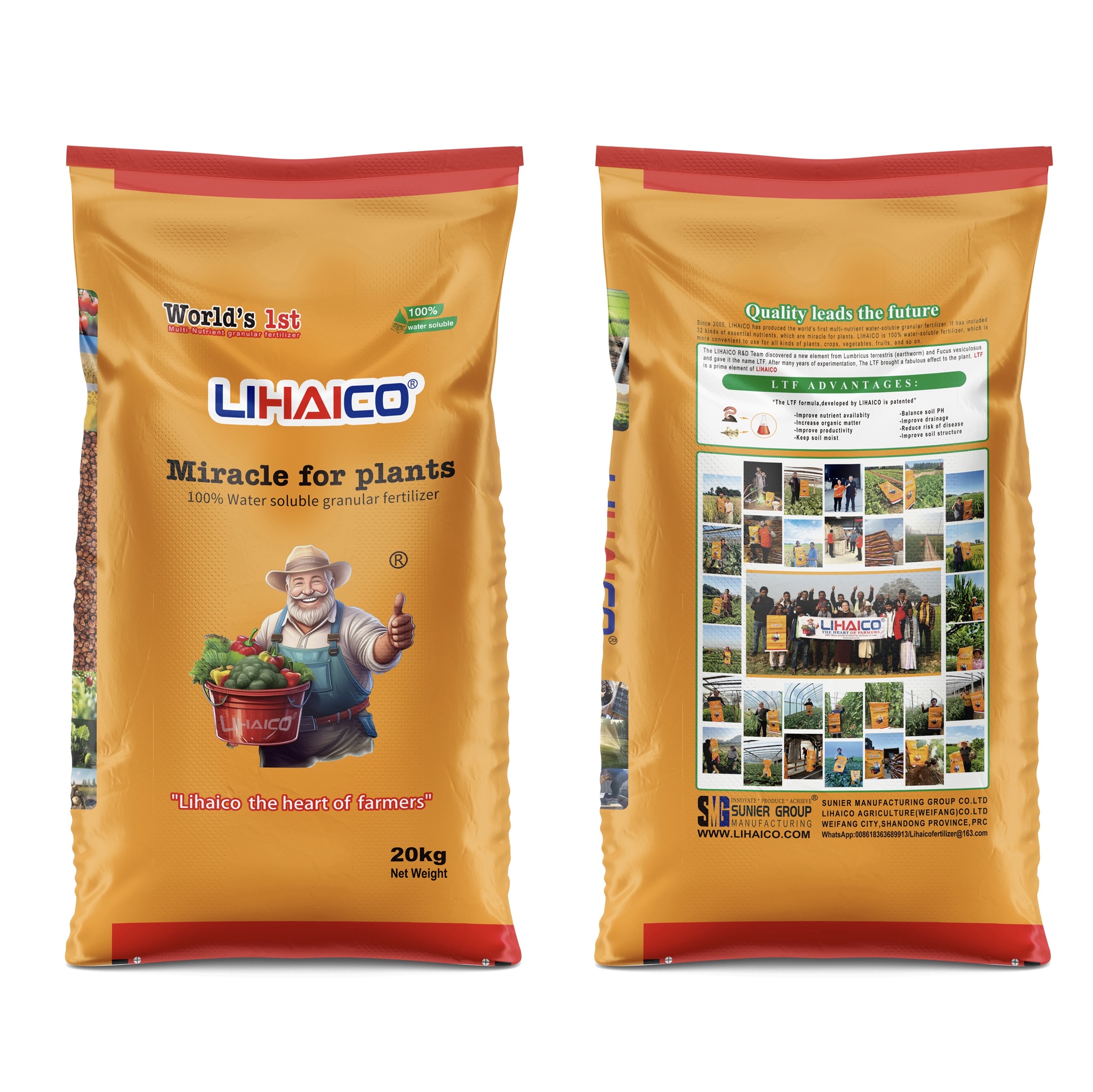
LIHAICO: The World's First Multi-Nutrient Granules Fertilizer
LIHAICO is a revolutionary compound fertilizer that stands out as the world's first multi-nutrient granules fertilizer. It is designed to provide a comprehensive and balanced supply of both macro and micro nutrients essential for plant growth and development. Unlike traditional fertilizers that focus on a limited number of nutrients.

LIHAICO COMPOSITION
LIHAICO combines 32 essential nutrients including NPK(15-5-5) in a single granule, ensuring that plants receive a complete and balanced diet for optimal growth, health, and productivity.
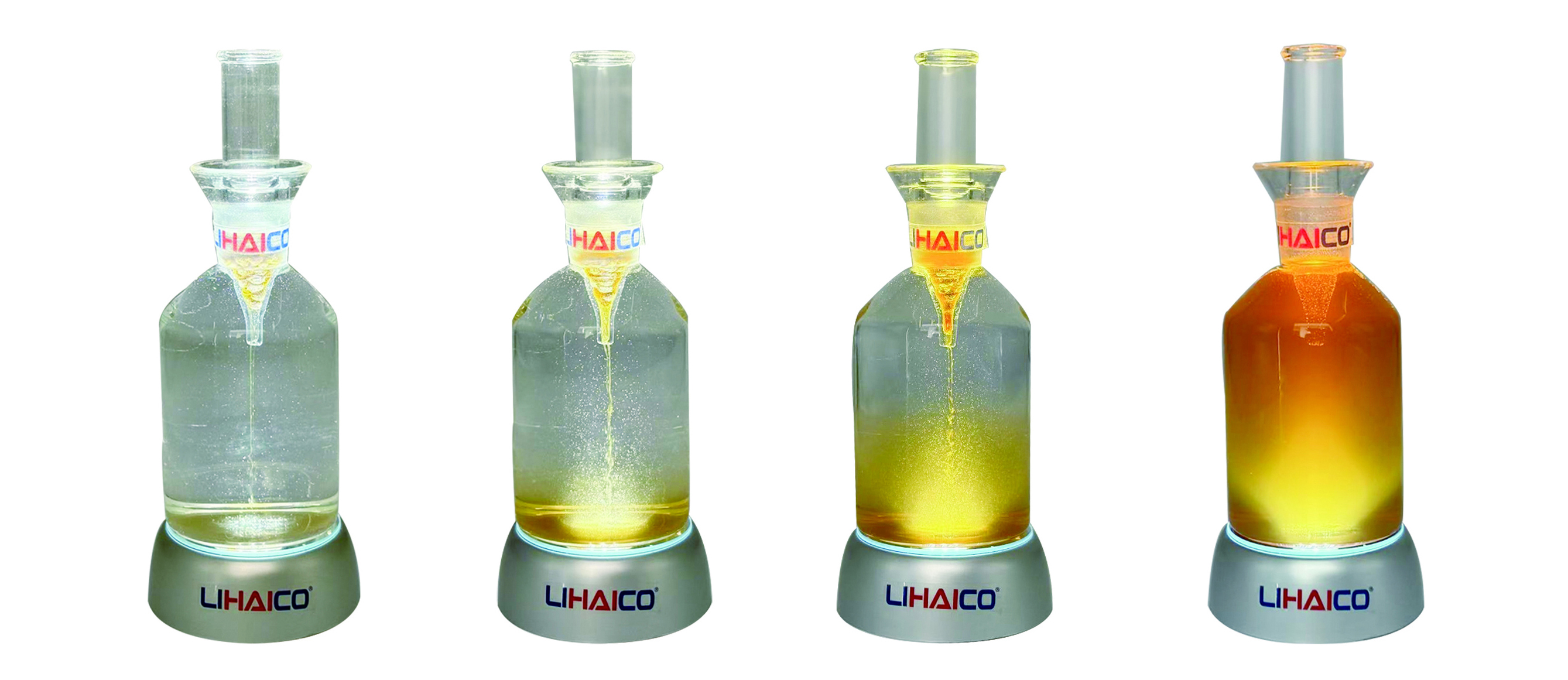
100% WATER SOLUBLE
Complete Solubility,Rapid Absorption ,Versatility,Precision Nutrition ,Improved Efficiency,Wide Application
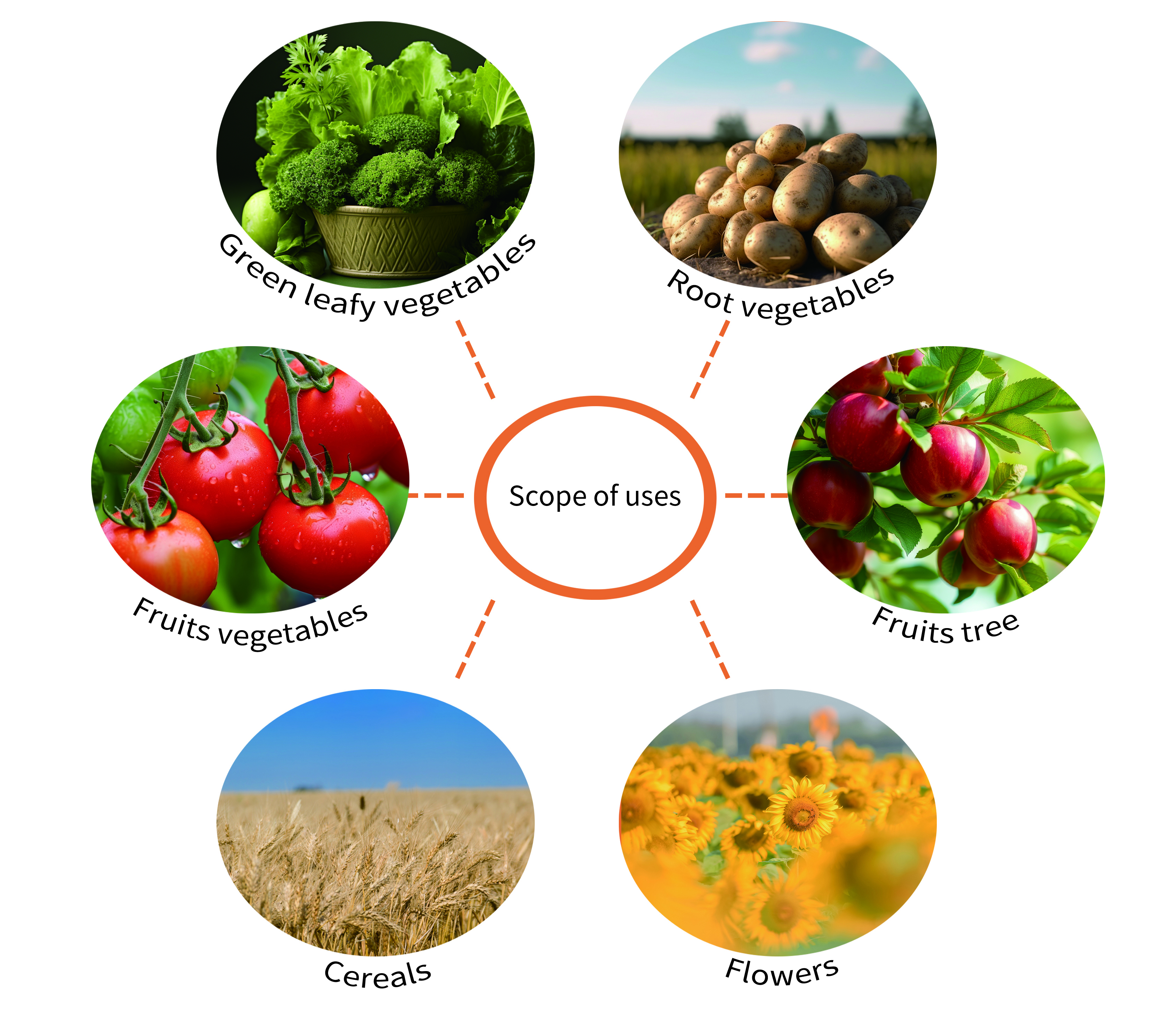
SCOPE OF USES
LIHAICO is a versatile, 100% water-soluble granule fertilizer suitable for a wide range of crops, including vegetables, fruits, flowers, trees, houseplants, lawns, shrubs, root vegetables, cereals, and fruit trees.
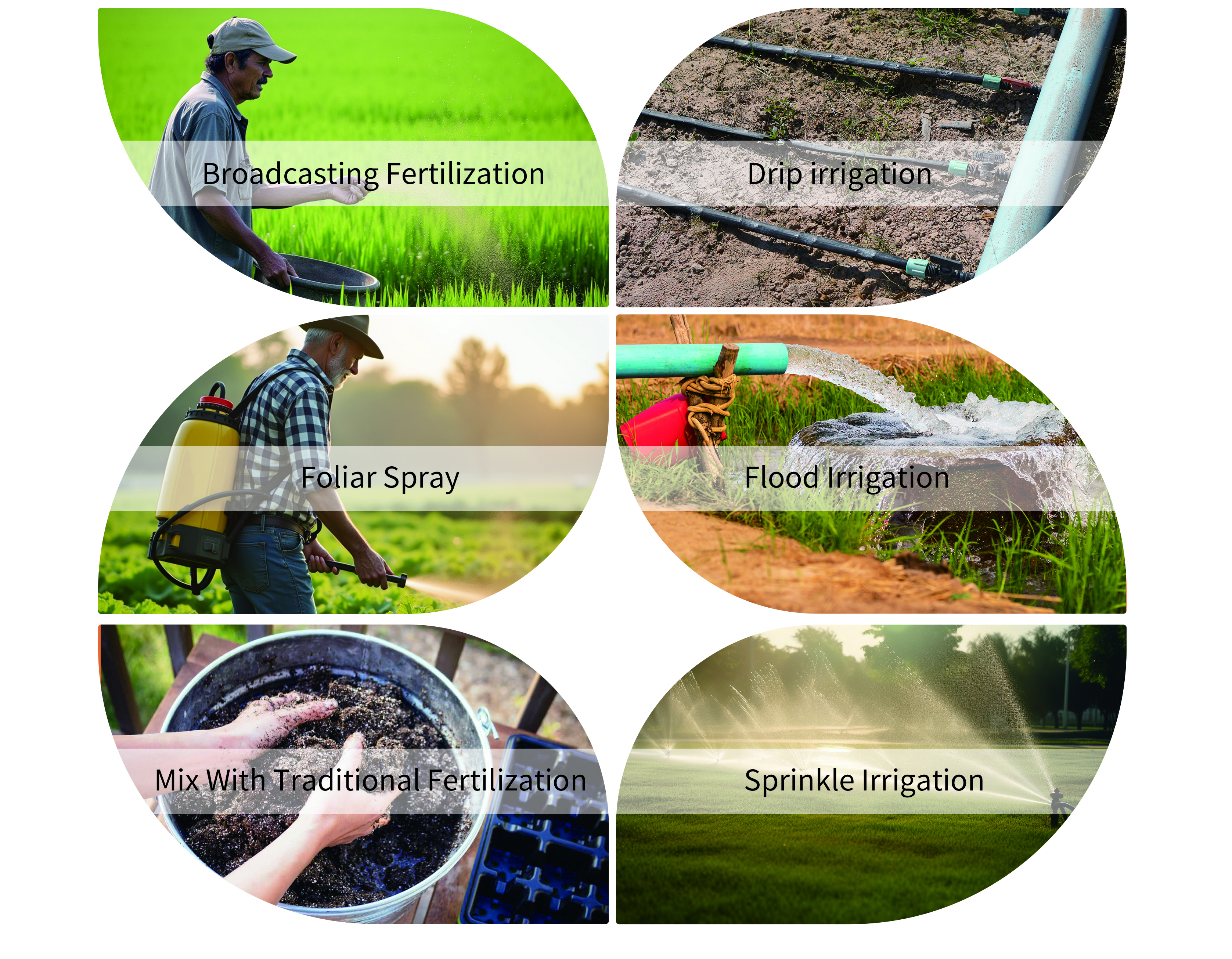
CONVENIENT TO USE
LIHAICO is a 100% water-soluble granular fertilizer designed for versatile application. It can be applied through broadcast fertilization, foliar spraying, flood irrigation, drip irrigation, sprinkler irrigation, or mixed with traditional fertilizers.
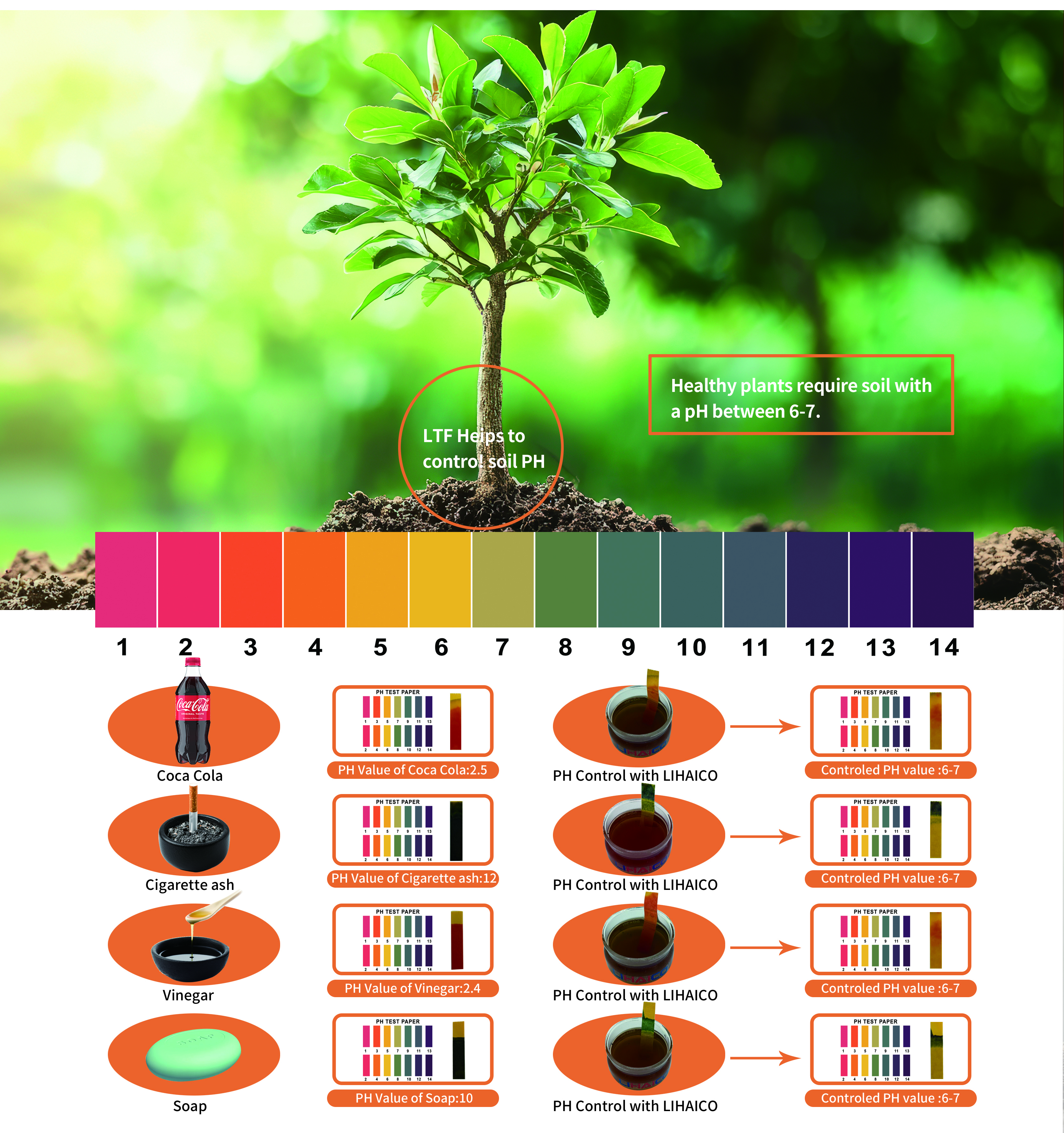
HOW LIHAICO CAN BALANCE SOIL PH?
Because of our core element LTF can help to balance Acidic and alkaline soil PH. Healthy plants require soil with a PH between 6-7.
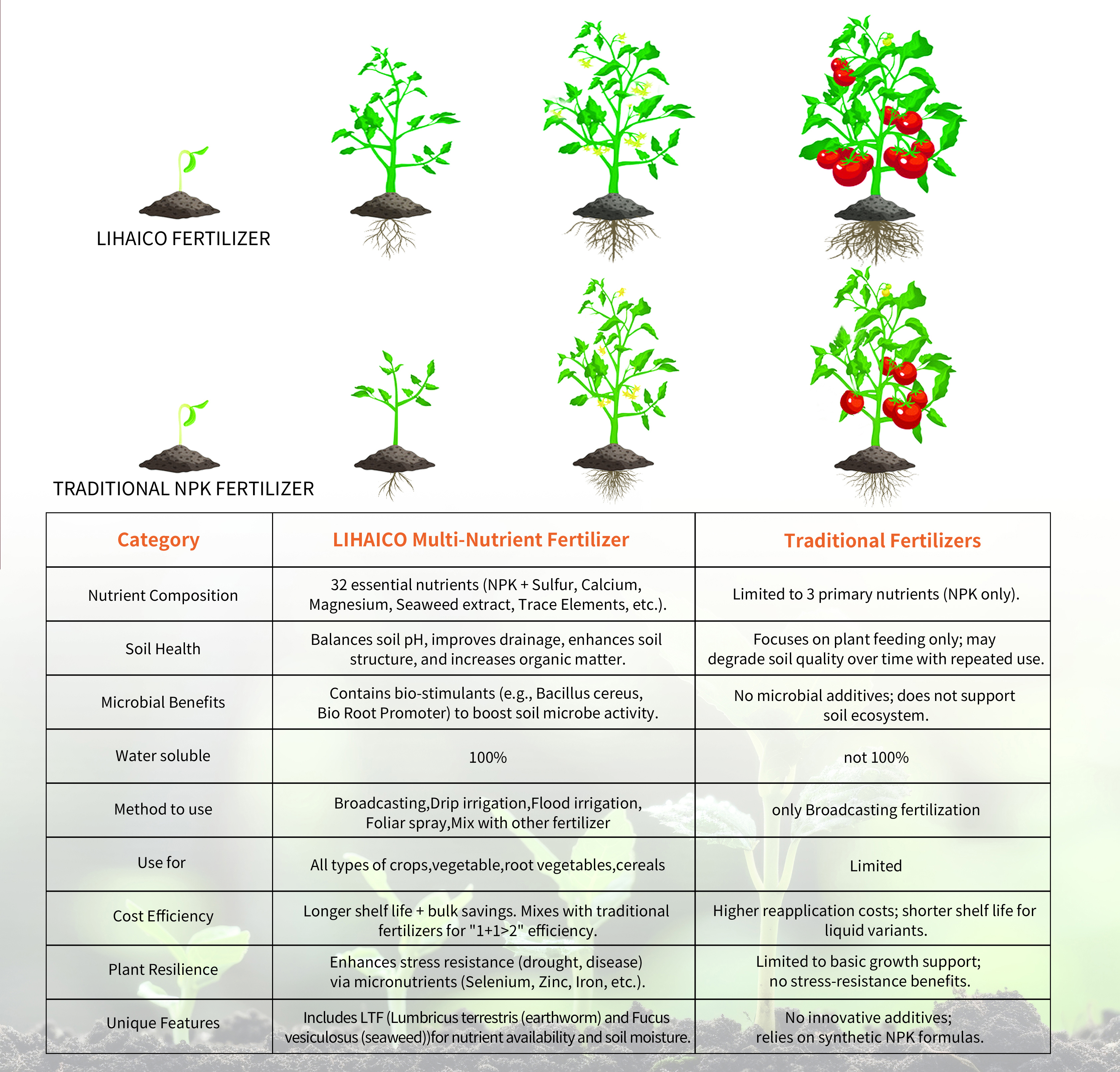
LIHAICO Fertilizer V/S TRADITIONAL NPK Fertilizer
There are several difference such as Nutrient composition,soil health,microbial benefits,water solubility,method to use and so on
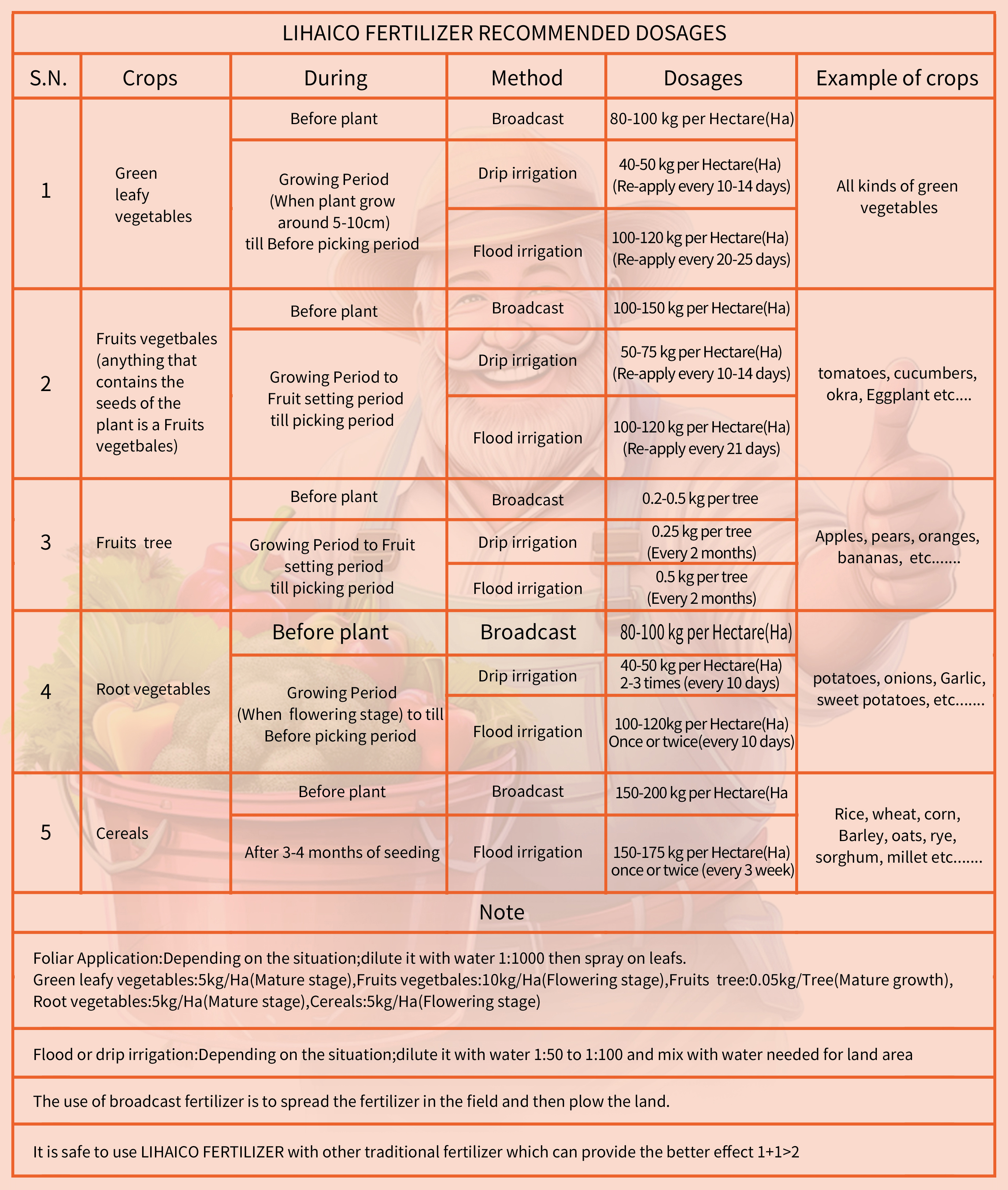
RECOMENDED DOSAGES OF LIHAICO
"This is just a recommended dosage based on Chinese land soil fertility and farmers' practices. Each country's land soil fertility and farmers' practices are different, so under the direction of the dealer, please adjust the dosage as necessary.
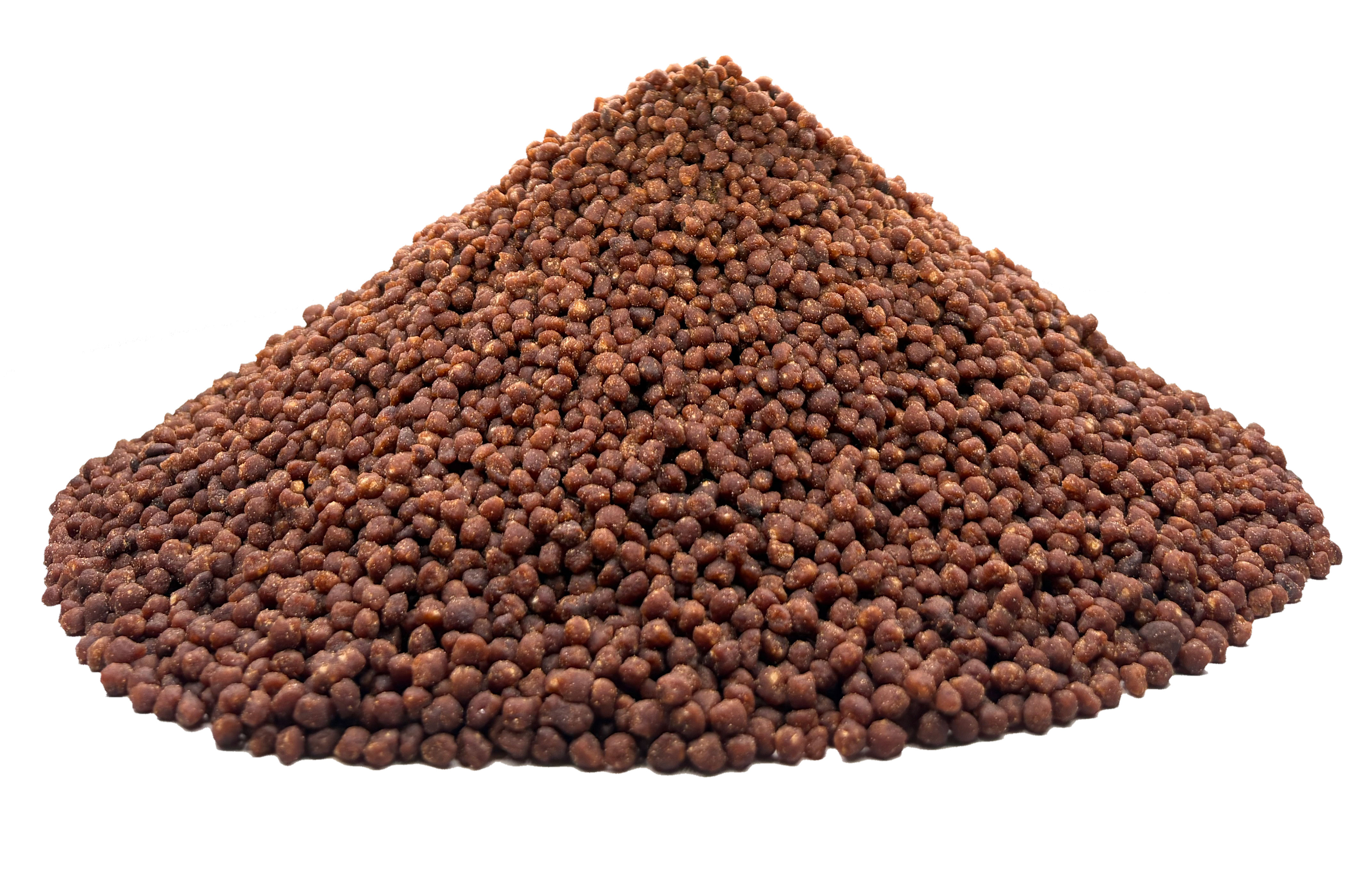
LIHAICO NUTRIENTS KNOWLEDGE:
Macro-Nutrients
N: NITROGEN
Nitrogen is a component of vitamins, amino acids and energy systems within the plant, which form various proteins. N deficiency results in reduced chlorophyll, a decreased utilization of sunlight as an energy source, and limits overall nutrient uptake.
P-PHOSPHORUS
One of the three primary macronutrients, phosphorus fosters root development, stalk strength, seed production and more.
P deficiencies are harder to detect than Nor K deficiencies and are generally associated with stunted growth in early stages of development.
K-POTASSIUM
Potassium is known as the
“quality nutrient” because of its important effects on factors such as size, shape, color, taste, shelf life, fiber and other quality-related measurements.
Proper K levels maintain turgor and manage water loss and wilting.
Medium-Element
S-SULFUR
Sulfur serves a wide variety of functions such as seed production, winter hardiness, protein synthesis and more. Adequate S is key for efficient nitrogen fixation in leguminous plants. S is increasingly deficient in the soil as it is a mobile nutrient.
Mg-MAGNESIUM
Magnesium plays a critical role in plant health. Mg acts as a phosphorus carrier within plants and is required for better root formation. Proper Mg levels result in better nutrient and water use efficiency within the plant.
Ca-CALCIUM
Calcium is vital to the strength of the plant structures, all while helping balance organic acids within the plant.Calcium contributes to yields indirectly by improving root growth conditions and stimulating microbial activity.
LIHAICO:SMG CORE ELEMENT
LTF(Lumbricus Terrestris-Fucus blend formula):Our product uses an LTF extract derived from both fucus vesiculosus (a type of seaweed known for its natural bioactive compounds) and earthworm. This dual-source extraction is designed to harness a synergistic profile of beneficial molecules, which many customers have found to be highly effective.
TRACE ELEMENT
Fe-IRON
Iron is essential for creating chlorophyll, assisting in cell division and necessary for plant growth.Deficiency prompts pale green/yellow leaves and lack of crop quality.
B-BORON
Boron is the second most widespread micronutrient deficiency. Required in small amounts, primarily during reproduction stages, boron is a component in all cell walls within the plant. Due to phloem immobility, B is most effective when applied through a broadcast application for uptake through the roots.
EDTA-Zn-ZINC
Zinc aids in the synthesis of plant-growth substances and enzyme systems. Although Zn is needed in small amounts, high yields are impossible without it.
EDTA-Mn-MANGANESE
Manganese acts as an enzyme activator and enables the manufacture of chlorophyll. This nutrient accelerates germination and maturity while increasing available P and Ca.
Mo-MOLYBDENUM
Molybdenum converts inorganic phosphorus to organic forms - making P more available. It is more available as pH increases. Insufficient levels of Mo can cause marginal yellowing, cupping of leaves and stunting of plants.
Cu-COPPER
Copper assists in vitamin A production, protein synthesis and enzyme activation. Cu is key in nitrogen and hormone metabolism.It is immobile in the plant.
CL-CHLORINE
Chlorine is taken up by the plant as the Chloride anion. It regulates stomata activity to help minimize water loss in dry periods. It also supports transport of other nutrients, and cations such as Ca, Mg and K within the plant.
Si-SILICON
Silicon fortifies plant cell wals,enhances nutrient uptake and triggers stress-defense responses to improve overall growth and resilience.
i-IODINE
Iodine exerts a beneficial effect on plants, even when used in tiny amounts. Even more importantly, iodine is incorporated in plant’s proteins, indicating that it behaves as several micronutrients that are essential for plant growth and development.
Ni-NICKEL
Nickel is necessary for conversion of urea to ammonia. Ni is essential for nitrogen (Ni metabolism and required in small amounts, with a critical level of 0.1 ppm. Ni is rarely found deficient in crop-growing conditions.
V-VANADIUM
vanadium ions can stimulate plant growth and development, exert cytoprotective effects, and effectively enhance the synthesis of some biologically active compounds.
CO-COBALT
Cobalt plays a critical role in the overall growth process of plants. Cobalt is necessary for the processes of stem growth, elongating the coleoptiles, and expanding leaf discs.
Se-SELENIUM
Selenium is a beneficial micronutrient for plants that acts as an antioxidant at low doses and protect the plants against number of environmental stresses either by modulating the primary metabolic pathways or regulating the production of phenolic compounds.
Na-SODIUM
In plants,sodium can contribute to osmotic regulation and in some cases,substitute for potassium,although excess levels lead to salt stress and impaired nutrient uptake.
LIHAICO is a groundbreaking fertilizer that offers a complete and balanced nutrient solution for plants. Its unique multi-nutrient granule formulation ensures that plants receive all the essential elements they need for healthy growth, high yields, and resistance to environmental stresses. By combining macro nutrient,medium nutrient,trace element and core element LTF in a single product, LIHAICO simplifies fertilization, reduces costs, and promotes sustainable agriculture. It is truly a game-changer in the field of plant nutrition.
SMG-POTASSIUM FULVIC ACID
Potassium Fulvic acid can improve soil structure, increase soil nutrient levels and prevent plant diseases.
SMG-PLA-POLYMERS OF L-LATIC ACID
Polymers of L-lactic acid are shown to promote plant growth. Dry weight of duckweed (terminal minor L) and corn (Zea mays L) was more than doubled when plants were grown in media containing the dimer of L-lactic acid, L-lactoylactic acid.
SMG-PASP-POLYASPARTIC ACID
Polyaspartic acid is widely used in agriculture owing to its role in promoting crop growth and nutrient absorption,and its effects are correlated with its moleculal weight.
SMG-CHITOSAN OLIGOSACCHARIDE
Chitosan is often used in plant disease control as a powerful elicitor rather than a direct antimicrobial or toxic agent. Its direct toxicity remains dependent on properties such as the concentration applied, the molecular weight.
SMG-AMINO ACID
Amino acids in plants are fundamental building blocks that not only assemble into proteins but also serve as precursors for hormones, stress-response molecules and key metabolites that drive growth, development and defense.
CMFS-CONDENSED MOLASSES FERMENTATION SOLUBLE
CMS is also rich in protein, amino acids, organic acids, vitamins, minerals, biochemical fulvic acid, and unknown growth factors synthesized by micro organisms in the fermentation process.
SMG-GLU-GULTAMIC ACID
Gultamic acid Accumulating evidence indicates that Glu functions as a signaling molecule to regulate plant growth, development, and defense responses. The ligand-gated Glu receptor-like proteins (GLRs) mediate some of these responses.
SMG-SEAWEED EXTRACTS
Seaweed products have been shown to promote increased germination rates and cause significant increases in seedling vigor by enhancing root size and density.
SMG-FISH PROTEIN
It implies that adding FPH to feed will change the proportion of intact protein, peptides and free amino acids in the feed formulation, which will help to address the deficiency or imbalance of essential amino acids in plant protein based diets.
SMG-BIO ROOT PROMOTOR
BIO ROOT Stimulates growth of white (Active) roots. BIO ROOT increases the efficacy of fertilizer by preventing nutrient leaching from the root zone and ensuring sustained release of nutrients to the root zone as needed by plants.